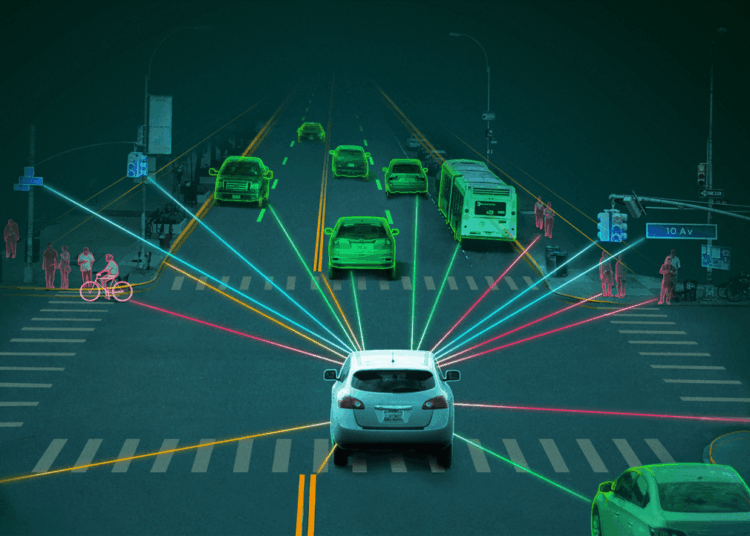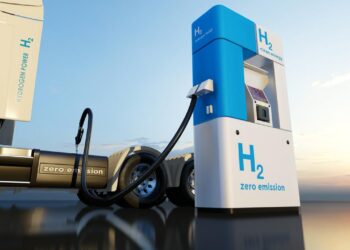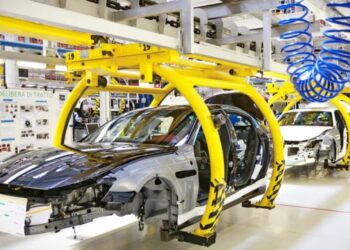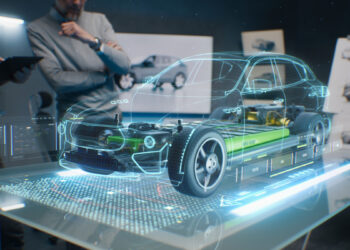The concept of vehicles driving themselves once resided firmly in the realm of science fiction. Today, however, autonomous driving is not just a futuristic vision but a rapidly evolving reality, poised to redefine transportation as we know it. From enhanced safety to increased efficiency and entirely new economic models, the implications of self-driving cars are profound and far-reaching. This isn’t merely an upgrade to existing vehicles; it’s a fundamental reimagining of our relationship with personal transportation, public transit, and urban planning. The journey to fully autonomous vehicles is complex, fraught with technical challenges, regulatory hurdles, and societal considerations, yet the progress is undeniable, heralding a new era of mobility.
Autonomous Driving Levels and Technologies
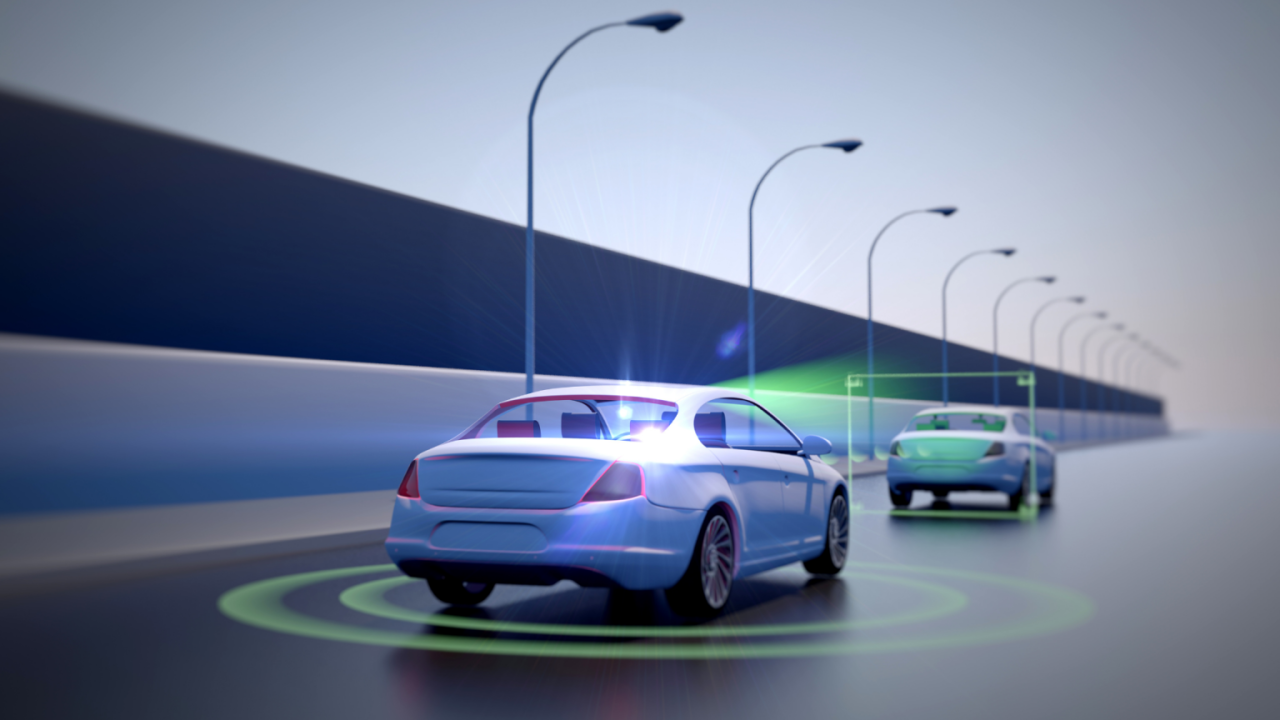
To fully grasp the scope of autonomous driving, it’s essential to understand the different levels of autonomy and the core technologies that enable them. The Society of Automotive Engineers (SAE) International has established a widely accepted classification system, ranging from Level 0 (no automation) to Level 5 (full automation).
A. SAE Levels of Driving Automation
- Level 0: No Driving Automation. The human driver performs all driving tasks. This includes most older vehicles.
- Level 1: Driver Assistance. The vehicle features a single automated system for either steering or acceleration/deceleration. Examples include cruise control or lane-keeping assist. The human driver remains fully responsible for all other aspects of driving.
- Level 2: Partial Driving Automation. The vehicle can control both steering and acceleration/deceleration simultaneously. Features like adaptive cruise control with lane centering fall into this category. The driver must remain engaged and ready to take over at any moment. This is where most advanced consumer vehicles currently operate.
- Level 3: Conditional Driving Automation. The vehicle can perform all driving tasks under specific conditions, but a human driver must be ready to intervene if the system requests it. The driver can disengage from monitoring the road for periods, but must be available to take over if the system encounters a scenario it cannot handle. Traffic Jam Pilot is an example of a Level 3 system.
- Level 4: High Driving Automation. The vehicle can perform all driving tasks and monitor the driving environment under specific conditions, without requiring human intervention. If the system encounters a situation it cannot handle, it will safely pull over. This level is often envisioned for specific geographic areas or “geo-fenced” operational design domains (ODDs).
- Level 5: Full Driving Automation. The vehicle can perform all driving tasks in all conditions, equivalent to a human driver. No human intervention is ever required. This level represents the ultimate goal of autonomous driving, where the vehicle can operate anywhere, anytime, without a steering wheel or pedals.
B. Core Technologies Enabling Autonomy
The capabilities of self-driving cars rely on a sophisticated array of sensors, computing power, and artificial intelligence.
- Sensors:
- Cameras: Provide visual information, identifying lane markings, traffic lights, road signs, and other vehicles and pedestrians. They are crucial for object recognition and classification.
- Radar: Emits radio waves to detect the distance, speed, and direction of objects. It performs well in adverse weather conditions like fog or heavy rain.
- Lidar (Light Detection and Ranging): Uses lasers to create precise 3D maps of the vehicle’s surroundings. It offers highly accurate distance measurements and detailed environmental understanding, often used for mapping and obstacle detection.
- Ultrasonic Sensors: Short-range sensors typically used for parking assistance and detecting nearby obstacles at low speeds.
- Localization and Mapping:
- GPS (Global Positioning System): Provides general location data, though not precise enough for autonomous driving on its own.
- HD Maps (High-Definition Maps): Extremely detailed, centimeter-level maps that include information about lane lines, road signs, traffic lights, and even curb heights. These maps act as a crucial reference for the autonomous system.
- Inertial Measurement Units (IMUs): Consisting of accelerometers and gyroscopes, IMUs track the vehicle’s position, orientation, and velocity relative to its starting point.
- Artificial Intelligence (AI) and Machine Learning (ML):
- Perception: AI algorithms process sensor data to identify and classify objects, predict their behavior, and understand the driving environment. This includes object detection, tracking, and segmentation.
- Prediction: ML models analyze the behavior of other road users (pedestrians, cyclists, other vehicles) to predict their likely actions, allowing the autonomous vehicle to react proactively.
- Planning: Based on perceived environment and predictions, planning algorithms determine the optimal path, speed, and maneuvers for the vehicle, adhering to traffic laws and ensuring safety. This involves decision-making on lane changes, turning, and obstacle avoidance.
- Control: Control systems translate the planning decisions into physical actions, operating the steering, brakes, and accelerator to execute the planned trajectory smoothly and precisely.
- High-Performance Computing: Autonomous vehicles require immense processing power to handle the vast amounts of real-time sensor data and complex AI algorithms. This often involves specialized computer hardware designed for automotive applications.
- Vehicle-to-Everything (V2X) Communication:
- V2V (Vehicle-to-Vehicle): Allows vehicles to communicate directly with each other, sharing information about speed, direction, braking, and potential hazards, enhancing situational awareness.
- V2I (Vehicle-to-Infrastructure): Enables communication between vehicles and road infrastructure (e.g., traffic lights, road sensors, toll booths), providing real-time data on traffic conditions, road closures, and optimal routing.
- V2P (Vehicle-to-Pedestrian/V2N – Vehicle-to-Network): Future systems may allow communication with pedestrians (via smartphones) or connect to broader networks for data exchange and fleet management.
The Transformative Potential of Autonomous Driving
The promise of autonomous driving extends far beyond simply not having to hold a steering wheel. Its potential benefits are wide-ranging and could fundamentally improve safety, efficiency, and accessibility in transportation.
A. Enhanced Road Safety
Human error is the leading cause of road accidents. Autonomous vehicles, unburdened by distraction, fatigue, or impairment, have the potential to significantly reduce collisions.
- Elimination of Human Error: Self-driving systems react faster, perceive more comprehensively, and are not subject to emotional or physical limitations that affect human drivers.
- Consistent Adherence to Traffic Laws: Autonomous vehicles are programmed to obey speed limits, traffic signals, and other road rules precisely, reducing violations.
- Improved Situational Awareness: The array of sensors provides a 360-degree view around the vehicle, often exceeding human perceptual capabilities, especially in low visibility or complex environments.
- Reduced Impaired Driving: Eliminates accidents caused by driving under the influence of alcohol, drugs, or extreme fatigue.
- Predictive Accident Prevention: AI systems can analyze potential hazards and react to prevent collisions before they occur, often by subtle adjustments or timely warnings.
B. Increased Efficiency and Reduced Congestion
Autonomous vehicles can optimize traffic flow and make more efficient use of road infrastructure.
- Optimized Traffic Flow: Self-driving cars can communicate with each other and infrastructure, allowing for smoother acceleration, braking, and lane changes, leading to less stop-and-go traffic.
- Higher Road Capacity: Vehicles can drive closer together more safely (platooning), effectively increasing the number of vehicles that can use a given stretch of road.
- Reduced Parking Needs: Fleets of autonomous taxis could reduce the need for privately owned vehicles that sit idle for most of the day, potentially freeing up valuable urban space currently dedicated to parking.
- Fuel Efficiency: Consistent speeds, optimized routes, and smoother driving result in lower fuel consumption for gasoline-electric hybrids or more efficient battery usage for EVs.
- Optimized Route Planning: Autonomous systems can leverage real-time traffic data to select the most efficient routes, minimizing travel time and energy use.
C. Enhanced Accessibility and Inclusivity
Autonomous driving can dramatically improve mobility for individuals who are currently unable to drive.
- Mobility for the Elderly: Provides independence and transportation options for seniors who may no longer be able to drive safely.
- Transportation for People with Disabilities: Offers unprecedented freedom and accessibility for individuals with visual impairments, physical limitations, or other disabilities that prevent them from operating a vehicle.
- Increased Productivity: Passengers in autonomous vehicles can use travel time for work, relaxation, or entertainment, turning commuting into productive or enjoyable time.
- Reduced Driving Stress: Eliminates the mental fatigue and stress associated with navigating traffic and long drives.
- Expanded Geographic Reach for Services: Autonomous delivery vehicles and ride-sharing services could extend to areas currently underserved by public or private transportation.
D. New Economic Opportunities and Business Models
The advent of autonomous vehicles will spark innovation and create entirely new industries and services.
- Robotaxi and Ride-Sharing Services: Fleets of self-driving cars could offer on-demand transportation at significantly lower costs than human-driven services.
- Autonomous Delivery and Logistics: Self-driving trucks, vans, and drones could revolutionize goods transportation, reducing labor costs and improving delivery times.
- Vehicle-as-a-Service (VaaS): A shift from individual car ownership to subscribing to mobility services, potentially leading to fewer privately owned vehicles.
- Data Monetization: The vast amounts of data collected by autonomous vehicles (traffic patterns, road conditions, passenger preferences) will be valuable for urban planning, advertising, and other services.
- Infrastructure Upgrades: Significant investment will be required for smart roads, charging stations, and communication networks to support autonomous fleets.
- New Insurance Models: Risk assessment and liability in an autonomous world will shift, leading to new insurance products and services.
Obstacles on the Road to Autonomy
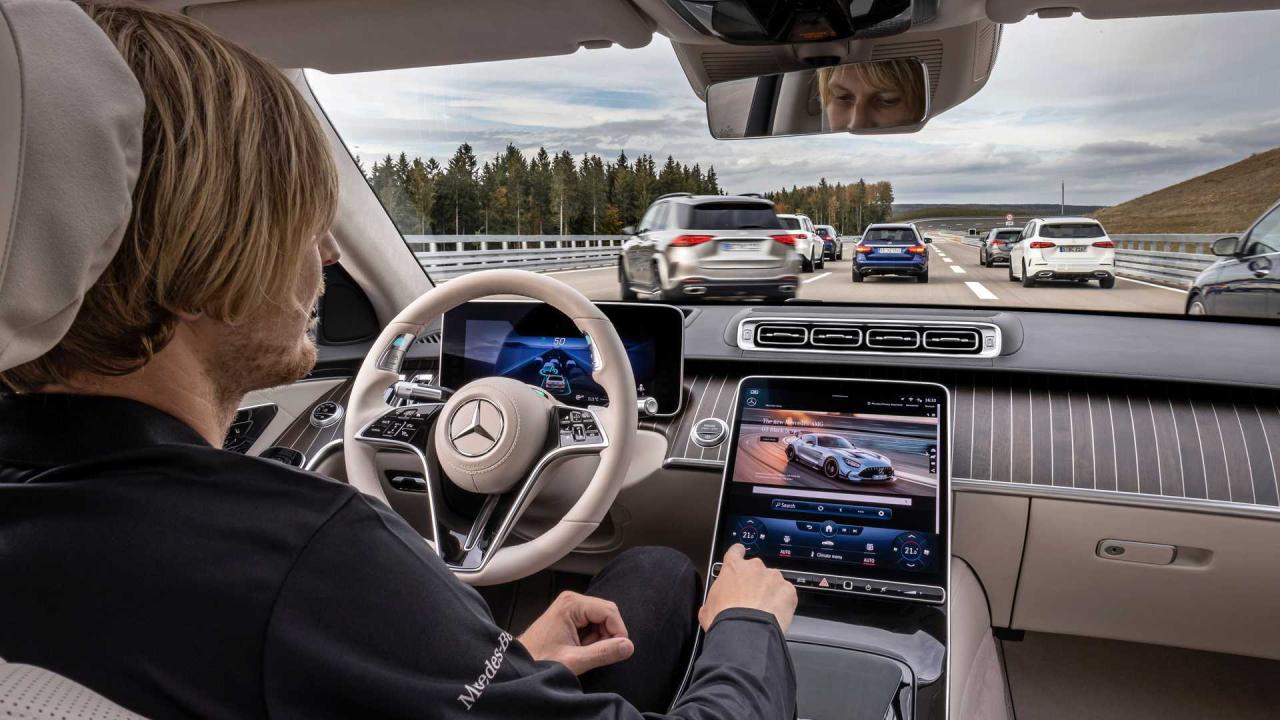
Despite the immense potential, the path to widespread autonomous driving is not without significant hurdles. Addressing these challenges is crucial for successful implementation and public acceptance.
A. Technical Complexities and Edge Cases
While autonomous systems excel in predictable environments, handling “edge cases” – unusual or unforeseen scenarios – remains a major challenge.
- Unpredictable Human Behavior: Humans are inherently unpredictable. Autonomous systems must be able to anticipate and react safely to erratic driving, jaywalking pedestrians, or unexpected gestures.
- Adverse Weather Conditions: Heavy rain, snow, fog, and ice can significantly impair sensor performance, reducing the system’s ability to accurately perceive its surroundings.
- Unstructured Environments: Construction zones, unpaved roads, or areas with poor signage present complex and dynamic challenges that are difficult to program for.
- Software Robustness and Reliability: The software must be incredibly robust, free from bugs, and capable of operating flawlessly for millions of miles in diverse conditions.
- Sensor Limitations: Each sensor type has limitations. Fusing data from multiple sensors to create a complete and reliable environmental model (sensor fusion) is critical but complex.
- Cybersecurity Risks: Autonomous vehicles are highly connected computers, making them potential targets for cyberattacks that could compromise safety or privacy.
B. Regulatory Frameworks and Legal Liability
Current traffic laws and liability frameworks were designed for human drivers, making them ill-suited for autonomous systems.
- Definition of “Driver”: When no human is actively controlling the vehicle, who is legally responsible in case of an accident? The manufacturer, software developer, vehicle owner, or fleet operator?
- Standardization: Lack of international or even national standards for testing, validation, and deployment of autonomous vehicles creates inconsistencies.
- Certification and Testing: Establishing rigorous and comprehensive testing protocols to prove the safety and reliability of autonomous systems before widespread deployment.
- Data Privacy: Autonomous vehicles collect vast amounts of data, raising concerns about privacy and how this data will be stored, used, and protected.
- Cross-Border Regulations: Ensuring seamless operation of autonomous vehicles across different jurisdictions with varying laws.
- Legislation for Operation: Creating laws that govern where, when, and how autonomous vehicles can operate, including speed limits, right-of-way rules for automated systems, and interaction with human-driven vehicles.
C. Public Acceptance and Trust
Building public trust is paramount. Accidents involving autonomous vehicles, even rare ones, can severely erode confidence.
- Safety Concerns: People need to be convinced that autonomous vehicles are safer than human-driven ones, and this will require extensive, transparent data.
- Loss of Control: Some individuals may feel uneasy relinquishing control of their vehicle to a machine.
- Ethical Dilemmas: In unavoidable accident scenarios, how should an autonomous vehicle be programmed to make decisions (e.g., prioritizing lives)? These “trolley problems” are complex ethical considerations.
- Job Displacement: Concerns about job losses in the transportation sector (truck drivers, taxi drivers) due to automation.
- Cybersecurity Fears: Worries about hacking or malicious control of autonomous vehicles.
- Transparency and Explainability: Users need to understand how the autonomous system works and why it makes certain decisions, fostering trust.
D. Infrastructure Readiness
While autonomous vehicles don’t strictly require smart infrastructure to operate, optimized roads and communication networks can significantly enhance their capabilities.
- Smart Road Infrastructure: Deploying V2I communication systems, intelligent traffic lights, and digital signage can provide valuable real-time data to autonomous vehicles.
- Charging Infrastructure: A robust and ubiquitous charging network is essential, particularly for electric autonomous vehicles and fleets.
- 5G Connectivity: High-speed, low-latency 5G networks are crucial for V2X communication and real-time data exchange in highly automated environments.
- Maintenance and Mapping: Keeping HD maps up-to-date and ensuring road infrastructure is clearly marked and maintained are ongoing operational challenges.
- Cyber-Physical Security: Protecting not just the vehicles but also the underlying infrastructure from cyber threats.
The Future of Autonomous Driving
The trajectory of autonomous driving suggests a gradual, iterative deployment rather than an overnight revolution. The future will likely see a phased integration, with increasing levels of autonomy becoming more common.
A. Phased Deployment and Hybrid Environments
Full Level 5 autonomy in all conditions is still many years away. The immediate future will involve:
- Expansion of Level 2+ and Level 3 Systems: More vehicles will offer highly capable driver-assistance features that operate in specific conditions (e.g., highway driving, traffic jams).
- Geo-Fenced Level 4 Operations: Autonomous ride-sharing and delivery services will expand in predefined urban areas or industrial zones where conditions are predictable.
- Mixed Traffic Environments: For the foreseeable future, autonomous vehicles will share roads with human-driven cars, requiring robust interaction and communication protocols.
B. Specialization and Dedicated Fleets
Autonomous technology will likely see early and significant adoption in specific use cases:
- Commercial Logistics: Self-driving trucks on highways, autonomous delivery vans in urban areas, and automated forklifts in warehouses.
- Public Transit: Autonomous shuttles and buses in specific routes or campuses, improving efficiency and service frequency.
- “Last Mile” Delivery: Small robotic vehicles or drones for local package and food delivery.
- Private Campuses and Industrial Parks: Controlled environments are ideal for early widespread deployment of Level 4 vehicles.
C. The Interconnected Ecosystem
The true power of autonomous driving will be unleashed when it becomes part of a broader, interconnected mobility ecosystem.
- Integrated Mobility Platforms: Apps that combine autonomous ride-sharing, public transit, and micro-mobility options (e-scooters, bikes) for seamless travel.
- Smart Cities: Urban planning that leverages autonomous vehicle data to optimize traffic flow, manage parking, and improve public safety.
- Personalized Mobility: Vehicles that learn individual preferences, optimize routes based on real-time needs, and offer customized in-cabin experiences.
- Energy Management Integration: Autonomous electric vehicle fleets that can intelligently charge during off-peak hours or even contribute energy back to the grid (V2G).
- Evolution of Vehicle Design: As the need for human control diminishes, vehicle interiors will be rethought, focusing on comfort, productivity, and entertainment rather than traditional driving controls.
D. Ethical and Societal Dialogue
As autonomous technology advances, the ongoing societal conversation about its implications will intensify.
- Ethical Guidelines: Development of clearer ethical frameworks for programming autonomous vehicle behavior in complex scenarios.
- Workforce Retraining: Programs to help workers in the transportation sector transition to new roles created by automation.
- Public Engagement: Ongoing dialogue and education to build public understanding and address concerns.
- Policy Adaptability: Governments will need to create flexible and adaptable regulatory frameworks that can keep pace with rapid technological advancements.
Conclusion
Autonomous driving represents the next great frontier in mobility, promising a future that is not just more convenient but fundamentally safer, more efficient, and more accessible. While the journey is undeniably complex, involving immense technical innovation, careful regulatory development, and proactive societal adaptation, the momentum is undeniable. The steady progression from driver-assistance systems to conditionally automated vehicles, and eventually to fully self-driving cars, signals a profound shift. As sensors become more sophisticated, AI algorithms smarter, and infrastructure more connected, autonomous vehicles will move from being a futuristic aspiration to an integral part of our daily lives, transforming how we move, interact with our cities, and redefine the very concept of driving. The road ahead is long, but the destination—a smarter, safer, and more connected world of mobility—is a compelling one.

